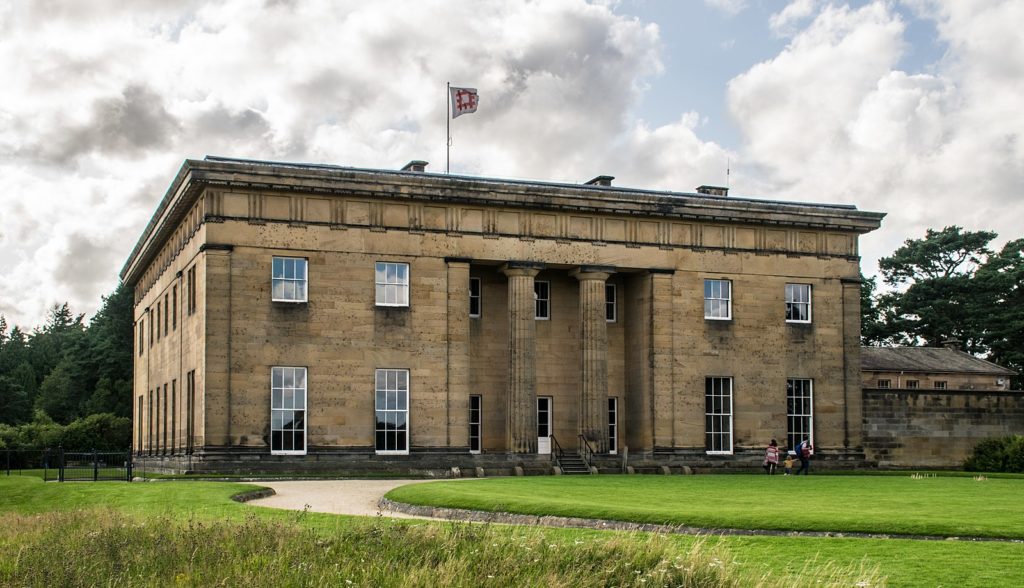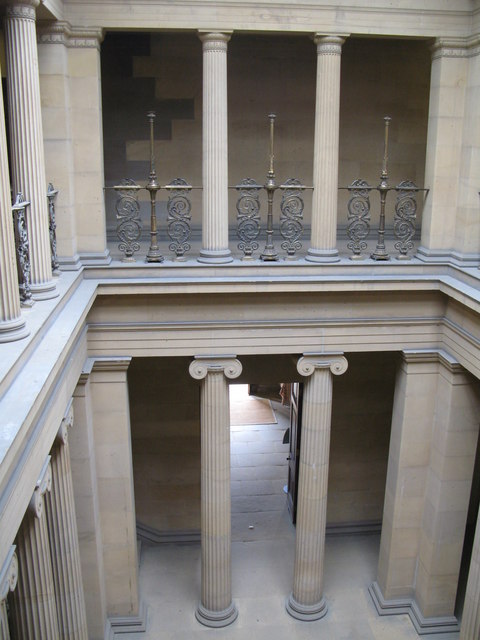
Belsay Hall, a historical house built in Greek temple style, was renewed in Northumberland, North East England, The Guardian reports.
Constructed between 1810 and 1817, Belsay Hall was the brainchild of its owner, Sir Charles Monk, an English liberal politician, who drew inspiration from his two-year honeymoon in Greece. The building was fashioned after the renowned Temple of Hephaestus in Athens, marking it as an early example of Greek Revival architecture in England.
However, the influence of time has not gone unnoticed in this place. The impact of changing weather patterns, including more intense rainfalls and fiercer winds, has necessitated extensive renovation.
Two-year Restoration Project

According to The Guardian, the recent two-year project, strengthened by a substantial £3.4 million, or $4.3 million, grant and other donations, addressed critical issues, such as constructing a new roof.
A particularly hard challenge was the roof, deliberately designed with an extremely low slope to maintain an unobtrusive profile. Poorly laid slates over the years allowed wind to dislodge them and rain to seep in, resulting in dampness issues plaguing the hall for two centuries. The comprehensive restoration aims to permanently banish these concerns.
Belsay’s reputation in England is closely tied to its fascinating gardens, as well as its rich botanical history that introduced many trees and shrubs to the region. Despite losing much of the original planting material, the forest garden was revived during the restoration. Thus, over eighty thousand new plants were expertly planted, with a significant portion of them, around thirty-five thousand, taking root within the forest.
English Heritage properties curator Mark Douglas expressed enthusiasm for the restoration’s outcome. He believes that Belsay Hall, located merely eight miles from Newcastle Airport, should gain greater recognition and draw architectural students to its presence.
Temple of Hephaestus
One of the outstanding symbols of Athens and all of Greece was the Temple of Hephaestus, built in the period around 460 to 415 BC. The time frame of its construction coincides with the creation of the Parthenon, and the temple itself was erected in honor of the patron of craftsmen, Hephaestus, who was skilled in the art of metal-working. This outstanding architectural composition has uniquely survived to this day in impressively good condition.
The building is located in close proximity to the Acropolis and is slightly higher than the Ancient Agora. The temple itself is characterized by the presence of six columns on the eastern and western sides. There are thirteen columns on the north and south. The construction of the temple relied on noble Pentelian marble.
From the time of the 7th century AD until 1834, this temple served as an Orthodox church. In the 19th century, it became a burial place for non-Orthodox Europeans and Philhellenes who fell during the Greek War of Independence in 1821.
In 1834, Otto, the first monarch of the modern state of Greece, turned this building into a museum, and it remained so until around 1934. Today, the Temple of Hephaestus is rightly considered one of the greatest architectural monuments of ancient Greece.
See all the latest news from Greece and the world at Greekreporter.com. Contact our newsroom to report an update or send your story, photos and videos. Follow GR on Google News and subscribe here to our daily email!



